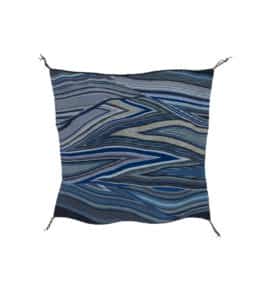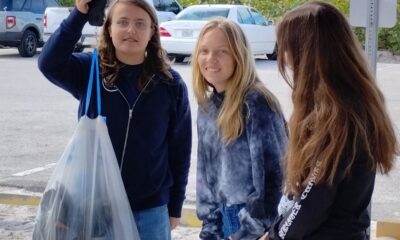Create
MFA exhibits bold, experimental 19th century Navajo textiles

Phoenix’s Heard Museum, where Native American arts of the Southwest are collected and studied, put together the latest exhibition to visit the Museum of Fine Arts St. Petersburg.
Color Riot! How Color Changed Navajo Textiles brings together more than 80 transitional Native American blankets and other boldly-designed weavings from the late 19th century to contemporary times.

Unidentified artist, Navajo, Saddle cover (ak’ídahí’nilí), 1880–1890, Four-ply commercial yarns, commercial cotton warps, aniline dyes, Fred Harvey Fine Arts Collection at the Heard Museum.
According to co-curator Ann Marshall of the Heard, the exhibition’s earliest works were created after 1864-68, when the Navajo and the Apache, suffering under the United States government’s “scorched earth” campaign, were marched to and imprisoned at the brutal Bosque Redondo internment camp in New Mexico.
“They were given, because they were freezing, about a thousand Hispanic-style blankets,” explained Marshall, the museum’s director of research. “And also, they were given some commercial yarn. So they got introduced to new colors that they had never before achieved. And that sent that creative spark going.”
Upon the signing of the 1868 Peace Treaty, the Navajo peoples were returned to their (greatly diminished) homelands. “And the old indigenous markets – because they had been known for weaving wearing blankets, and their blankets had been valued and traded up into the plains, into Mexico – those old indigenous markets were gone,” Marshall said. “They were given yarn to try to rebuild their flocks.
“That’s this period we wanted to focus on. Because in the abeyance of the market, there was just a chance for this incredible creativity.”

Marilou Schultz, Navajo b. 1954, Tó ÉíÍíńá/ Water is Life, 2018, One-ply commercial wool yarn, handspun churro wool, indigo dye, Collection of Carol Ann Mackay.
Along with Marshall, the exhibition is co-curated by three Navajo art scholars: Velma Kee Craig (also a weaver), Natalia Miles and Ninabah Winton.
Said Craig: “In Navajo weaving, there are no boundaries. Weavers, even if they are weaving inside the trading post-inspired regional designs, they’re taking design elements and re-interpreting them and re-formatting them across the textile in different ways that are meaningful to them.
“And then when they’re not weaving within those boundaries, as we see in a lot of the transitional textiles in Color Riot!, they take off. And that experimentation is still going on.”
According to the introductory wall panel at the Museum of Fine Arts:
Change has always been a hallmark of Navajo textile design, with the weavers’ individualism to a greater or lesser degree a continuing theme. Today, Navajo textiles are viewed as art, with the singular vision of the weaver appreciated and applauded just as the vision of an artist working in the Euro-American artistic tradition has always been recognized. Color Riot! celebrates artists with the courage and vision to experiment.
The exhibition is now on view, and will remain at the MFA through March 14. Details are here.







